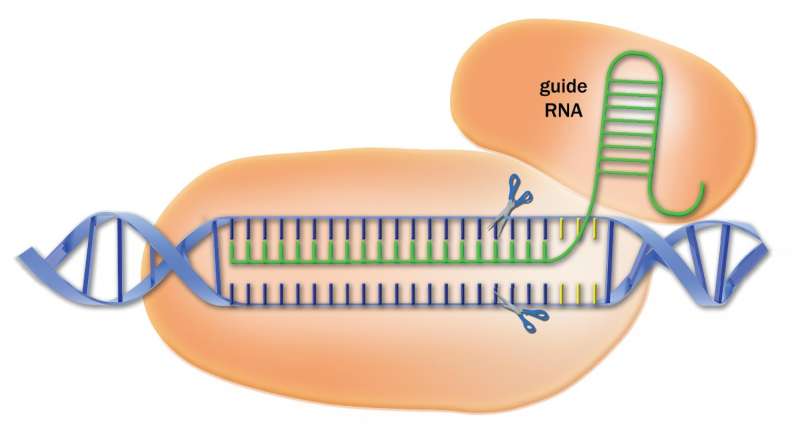Library of CRISPR targeting sequences increases power of the gene-editing method

CRISPR, the gene-editing technology that has taken biology by storm, is now more powerful than ever. Scientists have assembled a library of RNA sequences that can be used by researchers to direct the CRISPR-cas9 complex to cut DNA with exquisite, unprecedented precision.
Among other advantages, the new tool greatly increases the likelihood that a CRISPR "cut" (or series of related cuts) will have the functional impact that researchers intend. Disabling or deleting a gene or set of genes is much more certain to succeed fully with the new resource, minimizing the likelihood of "off-target" effects that can diminish the relevance of otherwise carefully planned and executed experiments.
"We've combined a machine learning approach with other strategies to optimize knock-out efficiency," says Professor Greg Hannon of Cancer Research UK Cambridge Institute, who led a team that included Drs. Simon Knott and Nicolas Erard. All three performed some of the research while at Cold Spring Harbor Laboratory (CSHL) prior to Dr. Hannon's move to the UK two years ago. Hannon, who is a CSHL adjunct professor, notes that the CRISPR library also facilitates multiplexing of experiments, as well as combinatorial targeting.
The team's paper introducing the new CRISPR resource appears in Molecular Cell July 20th.
Journal information: Molecular Cell
Provided by Cold Spring Harbor Laboratory



















